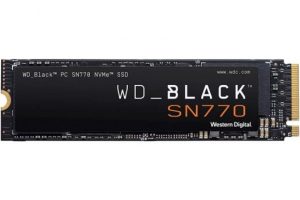Oct. 12 (Portaltic/EP) –
Monday, October 14 marks 25 years since the launch of Sega’s latest console in the European market, Dreamcastwhich was only marketed for a year and a half and which, despite its innovative features such as online functionalities powered by an integrated modem, was superseded by the PlayStation 2.
Dreamcast is the fifth desktop platform produced by Sega, which developed it together with Hitachi and Microsoft. The device used a 32-bit CPU with a Hitachi SH4 processor, a 128-bit NEC PowerVR2 graphics processor, a CD-ROM drive – designed by Yamaha to support the games on this game console – and an operating system. Windows CE.
In addition, this console launched in white had an outstanding accessory, a memory card with an LCD display, called the Visual Memory Unit (VMU). The results of the games could be stored in it and mini-games could be played with it, as if it were a portable console.
What was Sega’s last platform also included a novelty that was highly applauded at the time and that is common today in this type of device: it could connect to the internet, since it had an integrated 56Kbps modem.
Thanks to that, players could connect with others and participate in forums and chats, as well as download online games through a dedicated and free platform, Dreamarenawhich provided service for titles such as Phantasy Star Online or Worms World Party, among others.
The console was launched gradually and with the availability of different video games depending on the region. First, it arrived in Japan on November 27, 1998, with four games available, including Sonic Adventure, the first 3D game in Sega’s Sonic the Hedgehog series.
Later, it landed in the United States, on September 9, 1999. There it was presented with 18 titles, including Soulcalibur and The House of the Dead 2. It did not arrive in Europe until on October 14, and over time, more titles were published for the platform, such as Crazy Taxi or Resident Evil-Code: Veronica.
At the time of its launch, the managing director of the brand was Hidekazu Yukawa, who became the protagonist of the promotion of this device and who had to defend it against competitors such as Sony.
At that time, Sega was mired in a financial crisis derived from the poor sales of its predecessor, Saturn – which had also registered a high manufacturing cost -, and had registered a smaller share in the market for Sega Saturn consoles before the rise of the first PlayStation.
SUCCESS AFTER THE BAD FAME OF SATURN, ITS PREDECESSOR
sega saturn Released in 1994, it was a fifth-generation CD-ROM video game console that could handle three-dimensional graphics, but had a dual-processor architecture that made programming games difficult. Because of this, it was also more expensive to manufacture.
This was another reason why the manufacturer decided to use external components from PC games in the Dreamcast, which allowed it to make its product cheaper, as well as promote different software development kits, in order to encourage developers. to program for your console.
After an acceptable reception in the Japanese market, it was sold cheaper in the United States to attract more buyers. TO despite having worked well, since it is estimated that it sold more than 500,000 units in the first two weeks of launch in this country alone, as he recalls TechSpot, The option to offer it at a more affordable price was not agreed upon by Sega itself.
The brand’s CEO in America, Bernie Stolar, made this decision at his own risk. Specifically, it announced a launch offer in that country of 199 dollars (about 182 euros), compared to the 249 dollars (227 euros at the current exchange rate) that Sega had planned from the beginning. Because of that, the Japanese parent company terminated him.
In any case, thanks to this gesture it was possible to expand the number of sales outside Japan, a success that spread to the rest of Europe, where some 400,000 units were sold in approximately five weeks.
However, Dreamcast was never able to overcome the demand for Sony’s product, PlayStation. With the launch of the second iteration of this consolepublishers such as Electronic Arts, which had supported Sega Saturn, focused on the development of video games for this other platform because it offered better technical capabilities. This reduced the offer of video games available for Dreamcast, as stated Sega Retro.
Thus, just a few months after the PlayStation 2 went on sale, Sega announced the discontinuation of its Dreamcast console. as of March 31, 2001. This was also the result of a change in Sega’s management, aimed at reorienting its business strategy.
The then president, Shoichiro Irimajiri, resigned in May 2000 and was replaced by the founder of CSK Holdings Corporation, Isao Okawa, who believed that the company should abandon the hardware market due to its history of failures, since the expansions of another of its Mega Drive models did not register significant sales either.
With the announcement of the cessation of Dreamcast production, therefore, the brand confirmed its plans to become an exclusive video game developer. By then, more than 9 million Dreamcast sales had already been recorded and, with the end of its marketing, new titles were released. Among them, Sonic Adventure 2 and Shenmue II. The game servers, for their part, remained active until 2003 and technical support for the platform ceased four years later.









Add Comment